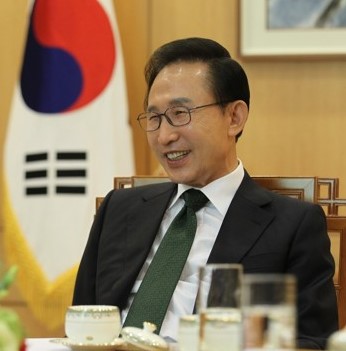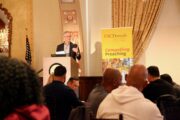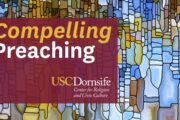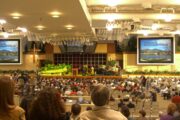This article is one in an occasional series on the ways in which religion impacts local and international affairs outside of the United States.
Note: South Korean President Lee Myung Bak is in Washington this week to discuss trade issues and restarting nuclear proliferation talks with North Korea. Nuclear talks stalled in 2009 and tensions increased when North Korean torpedoes sank a South Korean navy ship. In November 2010, the North and South exchanged fire after North Korea shelled Yeonpyeong Island , resulting in the highest level of tension between the two nations since the Korean War ended in 1953. Jong Hyun Jung explores how South Korean churches view the issue of a hard stance toward the North.
Fine Line between Love and Justice: The mixed responses of Korean churches toward North Korea
By Jong Hyun Jung
The North Korean missile attacks on Yeonpyeong Island last November revived a heated debate on the validity of the so-called “Sunshine Policy.” The policy, which was implemented from 1997 to 2007 by two left-leaning governments, focused on humanitarian aid and forging a peaceful relationship with the North. The Yeonpyeong Island incident, the first attack on a civilian area since the Korean War, propelled the South to reexamine several questions: Did the Sunshine Policy really bring peace to the peninsula or did it backfire? Did the policy serve to feed North Korean soldiers who launched missile attacks? Should South Korea take a more aggressive stance, and engage in war if necessary?
These questions can be summed up in a single one: “Should we choose, love or justice?” The question divided the country. The ruling party and a majority of ordinary citizens in the South argued for dismantling the Sunshine Policy and taking a harder line against the North. The opposition party, small segments of the population, and a smaller number of churches favored continuing negotiation with the North.
The vast majority of Korean Protestant churches criticized the military for its inadequate response to the North Korean attack, citing the number of missiles and shells fired, more than 120 by the North and 90 fired by the South. In order to justify their arguments, they cited verses from the Book of Exodus, such as “eye for eye and tooth for tooth” (Exodus 21:24). In light of the fact that most of the churches in the South are evangelical, and evangelicalism tends to have a right-leaning political orientation, this is quite understandable. In fact, Korean evangelical churches have objected to the “Sunshine Policy” in the past, and, even to the governments that implemented the policy. Protestant churches have had an uncomfortable relationship with leftist governments, because their policies collide with evangelical values and two progressive presidents do not share their evangelical faith; one was Catholic and the other was Buddhist.
Reflecting the prevalent anti-North sentiments in Korean Protestantism, President Lee parted with the “Sunshine Policy” gradually after he took to the power in 2008. He is right-leaning politician who serves as an elder of an evangelical mega-church located in a very affluent area in Seoul. When he was the mayor of Seoul, he said, “I will lift up and devote the entire city to the Lord.” This provocative statement left an indelible impression on religious minorities, who imagined that they might be out of favor when Mr. Lee became president. Mr. Lee’s policies and his staff recruitment reflect the strong influence of his evangelical faith. Even his military actions after the Yeonpyeong Island attack, were supported by Korean Protestants, but not by either Buddhists or Catholics.
However, Korean Protestantism is not unilateral in the matter. Liberal Protestant churches appear to place love over justice. Although they occupy a very small portion within Protestantism, their influence cannot be overlooked. Liberal churches, which are primarily left-leaning, have voiced their concern over the government’s military confrontation, calling for a new dialogue with the North and emphasizing the notion of North Koreans as brothers and sisters to embrace and love, rather than fight against.
The paradox found here is that it is these liberal churches fought vehemently for “justice” in the 1970s and 1980s. Liberal churches worked closely with the Catholic Church to form minjung theology, a Korean version of liberation theology that established the underpinnings of the protest movement against authoritarian regimes. During that period, most evangelical churches avoided publicly rebuking the government for increasing injustice, inequality, and human rights violations. Liberal churches took the initiative in fighting for democracy and justice, and therefore were considered as a symbol of justice by the general public at that time. With the North Korea issue, however, they point out the injustice of the South’s response, rather than emphasizing the pursuit of “justice” for the four lives claimed by North Korea’s military action.
The other paradox is that justice-oriented evangelical churches are engaged in some acts of compassion for the North. Yoido Full Gospel Church (YFGC), which is the largest church in the world, is a prime example. A Pentecostal congregation, YFGC has been harshly criticized by the left for being too much pro-American and anti-North. However, it is not well-known that this church has started to build a large hospital specialized for treating heart-related diseases in the heart of Pyongang in North Korea in 2007. Rampant starvation in the North has resulted in a greater numbers of children with heart problems, but due to a lack of facilities and medical personnel to treat them, many are dying. After hearing this news, Dr. David Yonggi Cho, the founder and former senior pastor of the church, met with high-profile officials in the North to talk about the possibility of building a hospital there. The multi-million dollar building project is almost solely funded by the church. Thus, the church supports President Lee’s aggressive diplomatic stance on one hand while pursuing a humanitarian agenda on the other.
Some groups within Protestantism are centrist, treading a middle ground between right and left, and therefore between love and justice. These groups have continuously engaged in efforts to ease North Korea’s suffering, sending food, fertilizer, and other necessities. The movement started off as a very tiny one in 1980s, but has gained popularity, especially among younger generations. The military clashes of 2010, however, have created fissures within the group. Not blind to the injustice done by the North Korean government, the centrist evangelical groups are flexible in their positions and are open to government negotiation with the North. They are the ones who are more likely than any other groups to strike a balance between love and justice, and we need to pay more attention to them when it comes to the South Korean Protestant church’s response to North Korea.
Will Korean churches find a fine line between love and justice? Korean Protestants have mixed stances and even some paradoxical traits, making it ever difficult to predict their course of action. At this point, all we can say is that South Korean churches, as well as the entire nation, are struggling to find a fine line between love and justice, which is a very elusive task.
Jong Hyun Jung is currently a graduate student in sociology at Purdue University. He graduated from Seoul National University (B.A. in sociology), Hansei University (M.Div.) in Korea and the University of Southern California (M.P.P.). His primary interest is in sociology of religion, particularly religion and politics, altruism, and Pentecostalism.








